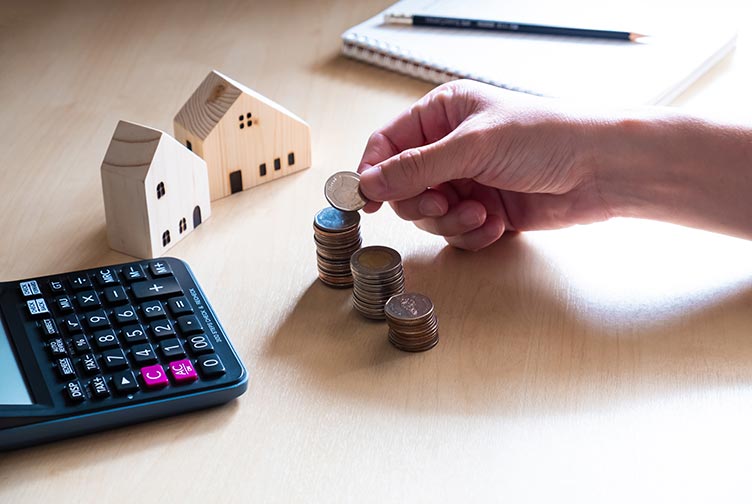
When a real estate investment is sold, the investor will want to know if they came out ahead and by how much. Finding the return on investment requires some calculations. Specifically, we need to look at something called the total holding period return.
The holding period return is similar to calculating annual returns during the holding period (before a property is sold). The main difference is that we must add the ending cash flow or sale proceeds.
Calculating Profit on the Sale of an Investment
We’re going to use the same example from our first article on calculating returns. In that article, we focused on calculating returns before selling the investment. This provided a performance return during the holding period. Now it's time to sell the investment and figure out the total return.
Here are the home purchase numbers that we’re using:
Home purchase price: $200,000
Monthly rent: $1400
Down payment (equity): $40,000 (19% of total investment with improvements: $210,000)
Loan: $170,000 @ 3% for 30 years
This property generates $1,464 (12 x $122) in annual cash flows.
After a ten year holding period, we decided to sell the home. It’s value has risen from $200,000 to $280,000. After ten years of payments, the loan balance is $129,233.68, which means there is $150,766.32 in equity.
To figure out the total profit from this sale, we’ll follow this general formula:
Gain/loss = (sale price) - (adjust cost basis)
We know the sale price was $280,000, and now we need the adjusted cost basis. We also must split the sale into allocations for the building and land. This split is used on form Form 4797. Form 4797 basically treats the property sale as two different sales — building and land. The allocation percentages can be found on your property tax statements (in the absence of an appraisal). We’ll assume allocations of 70% for the building and 30% for the land.
The related sales cost and depreciation are:
Annual Depreciation @ 3.6%: $72,000 over 10 years ($7,200 x 10)
Sales Price: $280,000
Realtor Commissions at 6%: $16,800
Now split the purchase price of $200,000 based on the percentage allocations:
Building Allocation: $150,000
Land Allocation: $50,000
And follow that as well by splitting the sales price of $280,000:
Building Allocation: $196,000
Land Allocation: $84,000
We must also allocate our selling cost of $16,800:
Building Cost: $11,760
Land Cost: $5,040
It's time to calculate the adjusted basis. The building is considered Section 1250 property. This means it will be subject to unrecaptured depreciation, which we’ll calculate a little later.
Building (Section 1250): $150,000
Sales Expense: $11,760
Improvements: $5,000
Depreciation: - $72,000
Adjusted Basis: = $94,760
From here, we can proceed with the building’s gain:
Building Sale Proceeds: $196,000
Adjusted Basis: - $94,760
Long-Term (LT) Capital Gain: $101,240
We can move on to the land gain. These calculations will follow the same format as our building gain calculations. Land does not depreciate, so there is nothing to factor in for depreciation.
Original Basis + Sales Expense: $55,040 (50,000 + 5040)
Depreciation: $0
And now we can calculate the cost basis:
Land Sale Proceeds: $84,000
Adjusted Basis: - $50,000 (50,000 - 0)
Total Gain: = $34,000
The land’s total gain is equal to its long-term capital gain since there is no depreciation. At this point, we can calculate the total long-term capital gain by adding the following:
Building LT Gain: $101,240
Land LT Gain: $34,000
Total LT Gain: $135,240
Calculating Holding Period Return
A total of $45,000 was put into the property — $40,000 down payment and $5,000 for improvements. From that $45,000, the property returned $135,240 over 10 years. That’s a gain of 300% before taxes. To get an idea of annual returns, we can do the following:
300/100 = 3
3 + 1 = 4
4 ^ 1/10 (raise 4 to the 1/0 power) = 1.1487
1.1487 - 1 = 0.1487
0.1487 x 100 - 14.87%
The above annual returns are only a rough approximation. Your accountant can provide the exact value.
Taxes will certainly affect the final return. Section 1250 unrecaptured depreciation (up to 25% rate) and the potential 3.8% Medicare surcharge tax may come into play in addition to long-term capital gains taxes. Tax calculations are more complicated since they are dependent on each person’s financial situation. It’s best to work with a tax advisor to figure out your after-tax return.
Investors can defer taxes on the sale of their property by doing a 1031 exchange. Finding a replacement property can be a challenge, but DSTs (Delaware Statutory Trusts) offer an alternative to searching for direct properties. Whether a 1031 exchange is right for you is a discussion to have with your financial advisor.



